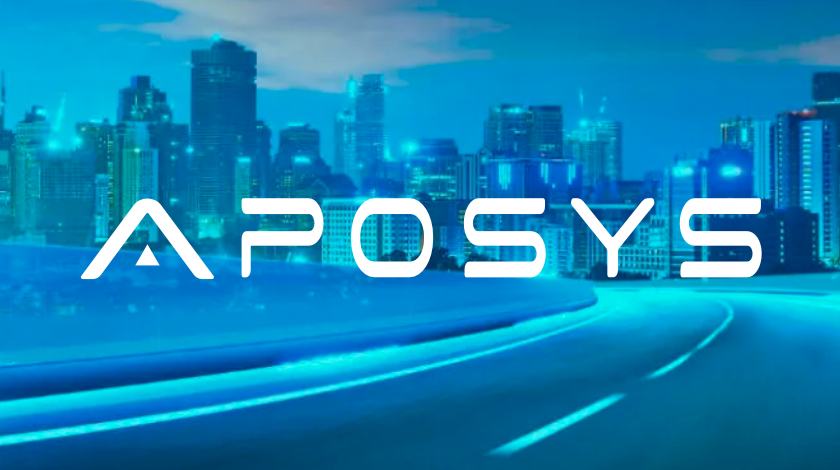ApoSys Technologies Inc

When: September 25, 2025
* Dates are subject to change
Where: Cold Creek Rd between Albion Vaughan Rd and Nashville Rd
Ward: 2
Project Partners:
- City of Vaughan • Transportation and Fleet Management Services (MoveSmart, Traffic Engineering)

AI Road Infrastructure Monitoring and Inspection
Maintaining road infrastructure is essential for safe and efficient movement of goods and people through cities, but traditional inspection methods of that infrastructure are often labour-intensive and reactive. By automating inspections, the City can potentially reallocate staff resources toward more specialized activities such as engineering analysis or strategic planning.
This demonstration will evaluate a technology-driven approach to road asset inspection and infrastructure monitoring using ApoSys Technologies Inc’s RoadSight Vegetation AI. This AI-powered software solution combines inputs from flexible sources—such as video, satellite imagery, climate modeling, and sensor data—to analyze infrastructure conditions and vegetation growth. The system identifies visibility obstructions, classifies infrastructure types, categorizes asset conditions, and forecasts maintenance needs.
By enabling continuous monitoring, RoadSight Vegetation AI offers the potential to shift from reactive inspections to a more predictive and data-driven approach—allowing the City to identify issues earlier, plan interventions more effectively, and maintain safer, more resilient infrastructure.
For the demonstration, ApoSys will be analyzing a 5km stretch in the City of Vaughan using video footage .
Purpose:
To demonstrate how RoadSight Vegetation AI can provide continuous inspection and automate the condition assessment of road assets—such as signs, poles, pavement markings, and vegetation obstruction—while reducing manual workload and improving operational efficiency. The system will showcase its ability to:
- Classify asset conditions and categorize condition severity
- Enable remote inspections to identify maintenance requirements
- Detect vegetation growth that obstructs signage and infrastructure
- Determine line of sight of road signs and infrastructure
Expected Outcomes:
- Comprehensive asset inventory with condition assessments
- Vegetation interference detection
- Report on maintenance needs and scheduling recommendations
- Insights for enhanced staff efficiency and reduced inspection costs
Company Description:
ApoSys Technologies is a Mississauga-based infrastructure technology company specializing in AI-powered monitoring and predictive maintenance solutions. The company has developed the Apollo Framework, an advanced digital platform that integrates satellite imagery, localized climate models, and multiple sensors, such as LiDAR, GPR, cameras, and IMUs—to monitor infrastructure conditions in real time continuously. Designed to address the urgent challenges of aging assets, climate change, and labor shortages, Apollo supports a wide range of infrastructure sectors, including railways, ice roads, tunnels, mines, sewage systems, and oil and gas networks.
ApoSys combines cutting-edge hardware with cloud-based analytics to provide digital twins, defect detection, and predictive insights that reduce manual inspection, lower costs, and enhance safety. With experience managing large-scale R&D projects and partnerships with Transport Canada, NRC, UBC, UWO, and international firms, ApoSys is positioned to lead the next generation of infrastructure management solutions. Its mission is to empower operators and engineers with data-driven tools that make infrastructure safer, more efficient, and climate-resilient.
🔗 Visit: aposystech.com
About AI Road Infrastructure Monitoring and Inspection
It’s an AI-powered system that monitors vegetation growth and infrastructure conditions using input information from sources such as video, satellite imagery, climate data, and camera sensors. It helps cities detect obstructions, assess asset health, and plan maintenance proactively. Their AI software analyzes the input sources to identify types of road infrastructure assets and classify their conditions. The data is compiled in a report with geolocation and predictive maintenance information for each asset.
RoadSight uses customizable algorithms to categorize asset conditions based on risk factors and visual indicators.
Categories can be tailored to the needs of the scenario, so it can use standardized information for classification (like the Municipal Maintenance Standards for road surface deficiencies), or be customized to provided parameters.
The RoadSight Vegetation AI system does not collect personal data. It uses publicly available satellite imagery, climate data, and camera footage focused on public infrastructure such as roads, sidewalks, and vegetation.
The camera data collected during the demonstration is intended for asset condition analysis and vegetation growth monitoring. If any incidental images of pedestrians or vehicles are captured, they will not be stored or used to identify individuals. Images of people captured during this limited-time demonstration will be blurred or discarded.
All data is processed and stored securely, with no personally identifiable information retained. The purpose of the data collection is strictly for infrastructure assessment and maintenance planning.
The system can assess road assets such as signs, poles, pavement markings, sidewalks, drainage infrastructure, and more. It also evaluates vegetation interference and structural conditions.
Additionally, for this demonstration project, City staff will be evaluating how effective RoadSight Vegetation AI can determine the line of sight for assets to provide further insights on the visibility of a stop sign.
RoadSight Vegetation AI could potentially support City staff by automating the monitoring of roadside assets and vegetation using satellite imagery, climate forecasting, and camera data. This enables proactive maintenance scheduling, reduces emergency interventions, and improves the accuracy of infrastructure assessments. It also allows staff to be reallocated to more specialized tasks—such as engineering analysis, proactive planning, and emergency response—maximizing the value of municipal resources and improving overall operational efficiency.
The data collected during the demonstration will be used to:
- Analyze vegetation growth and its impact on road assets
- Identify visibility obstructions affecting signage, signals, and pathways
- Classify the condition and severity of road infrastructure assets
- Forecast maintenance needs using climate modeling
- Support proactive planning and resource allocation through the Apollo Dashboard
This information will help the City of Vaughan improve road safety, optimize maintenance schedules, and reduce the need for manual inspections—ultimately contributing to more resilient and efficient transportation infrastructure.
